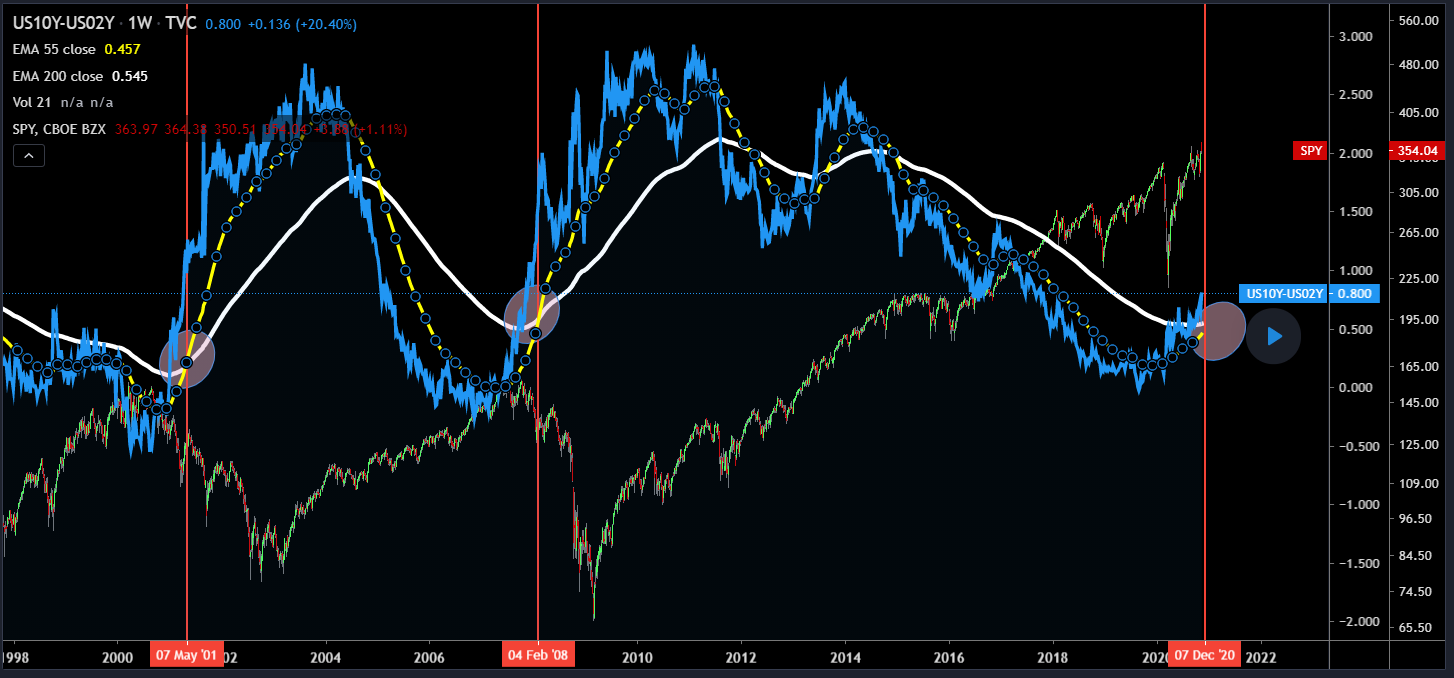
The 10y-2y bond yields are important because it is the long-short of market expectations; that is, how people view the near-term market vs. their perceived evolution of the market (that also anticipates the FOMC's likely reaction. It's several signals in one). The 10y2ys (blue) is the 10 year Treasury constant maturity (now at 0.96%) Minus the 2-Year Treasury constant maturity (now at 0.19%). When the spread increases, it means there's falling demand for long-term Treasury bonds, which means investors prefer higher risk, higher reward investments. Investors think interest rates will now rise in the short term.
Currently, the 10y-2y is at 0.8 and rising which last happened in December 2007, April 2001, December 1990, July 1986, October 1971... you get it. It's a reliable indicator, and in the past, a negative 10-2 spread has predicted every recession from 1955 to 2018 (SOURCE), but has occurred 6-24 months before the recession occurring. The last time it went negative was in August 2019.
THE ANALYSIS
Notice that we're approaching a golden cross (yellow 50ema crossing the white 200ema). The last time this happened was January 2008, and May 2001. I've overlaid the S&P- you can see it's crashed.
So is this a new paradigm of monetary policy? Or does nothing change? Is this time really different?
Here's the historical
https://www.longtermtrends.net...
MORE ABOUT THE YIELD CURVE
Bond prices and yields move inversely of each other. When bond prices go up yields go down, and vice versa. The reason that lower yields in the long term are a indicator for the economy is because longer term bonds are seen as safe investments meant for preserving wealth; while stocks, forex, and derivatives are riskier and used for growing wealth. When investors have a good outlook on the economy, they will sell their long term bonds and put that money into the riskier investments listed above. This flight from longer term bonds to riskier investments causes demand for the longer term bonds to fall, causing bond prices to fall ,and yields to increase. In times of bad economic outlook, people will start moving their money from stocks into the longer term bonds as a way to protect themselves from potential future downturns. This flight from stocks to longer term bonds causes demand to increase, causing bond prices to increase, and yields to go down.…




